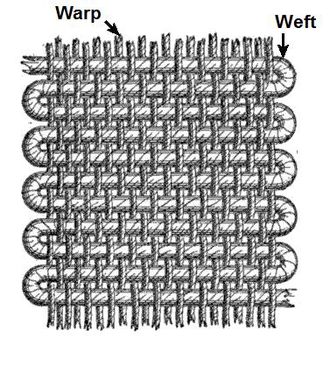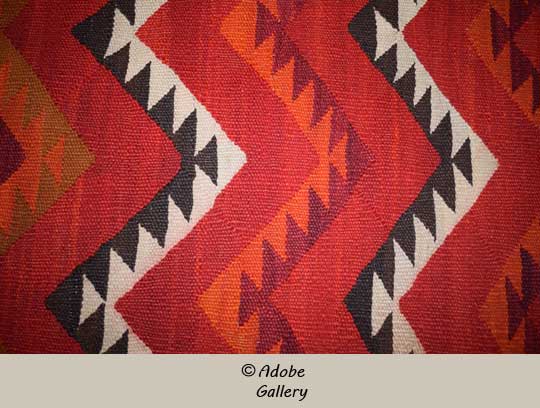Exceptional Nineteenth Century Classic Navajo Rug [SOLD]
+ Add to my watchlist Forward to Friend
- Category: Navajo Textiles
- Origin: Diné of the Navajo Nation
- Medium: wool, dyes
- Size: 4’ 7” x 3’
- Item # C4478P SOLD
This small Navajo textile was woven during the period known as the Late Classic Transitional Period-1870s-1910s. Several things had occurred to bring on this period of exceptional weaving by the Diné women. In 1868, the government and Navajo signed a treaty which released them from Bosque Redondo and settled them on a reservation. Having no livestock, food, or houses left them dependent on the government for subsistence. It took the government over a year to provide the sheep guaranteed by the treaty, so weaving was at a standstill for the first couple of years on the new reservation. When the sheep did arrive, they were not churro, the exceptional kind that the weavers previously had, which Kit Carson slaughtered during the roundup in 1864, but were merino sheep which had short and greasy wool.
For the women to start weaving again, the only sources of good wool were raveling commercial cloth or using imported commercial yarns being made in Germantown, Pennsylvania. It was during this period of using commercial yarns that the weavers created the most spectacular and classic textiles-serapes, blankets, and rugs. There was no good source of red in nature, so the availability of commercial red wool was a delight.
This small textile is an excellent example of what was being created in the 1890s-brilliant colors and tight consistent weave. Government licensed traders were being established on the reservation and becoming influential sources on what the weavers were to produce-primarily they were to switch their efforts from blankets to rugs. With the loss of their churro sheep, and replacement by the government of merino sheep with inferior fleece, the weavers chose to use commercial yarns, abandoning hand spun yarns.
Juan Lorenzo Hubbell was one of the best-known Indian traders in the early years of government licensed traders. In 1879 he took over the trading post at Ganado, Arizona. He was a stickler for encouraging the weavers to produce only the highest quality rugs by not buying any he felt were inferior. He instructed the weavers to use mostly black, brown, and red colors, with less use of gaudy colors. The results were rugs rich in red, offset by minimum use of bright colors.
In this small rug, we see what surely must have been the result of Mr. Hubbell's instructions-a rug rich in deep red, and a small amount of other rich colors. The weave is tight, and the yarn is consistent in thickness. It is classic and gorgeous.

Warp and Weft: "All twill weaves are produced by floating the weft elements over more than one warp at a time to create a raised pattern of color and texture. Three twill-weave techniques were used by both Navajo and Pueblo weavers: plain twill forming diagonal floats; herringbone twill, in which the diagonal floats alternate direction to form a vertical zigzag or chevron pattern; and a diamond twill, in which the herringbone patterns are woven in such a manner as to create concentric diamond patterns." Kaufman and Selser, 1985:138
Condition: excellent condition with a very minor red yarn bleed into the white yarn that is only noticeable under close examination
Provenance: this Exceptional Nineteenth Century Classic Navajo Rug is from the estate of Marvin and Betty Rubin of Albuquerque.
Recommended Reading: The Navajo Weaving Tradition 1650 to the Present by Alice Kaufman and Christopher Selser
TAGS: textiles, Navajo Nation

- Category: Navajo Textiles
- Origin: Diné of the Navajo Nation
- Medium: wool, dyes
- Size: 4’ 7” x 3’
- Item # C4478P SOLD



